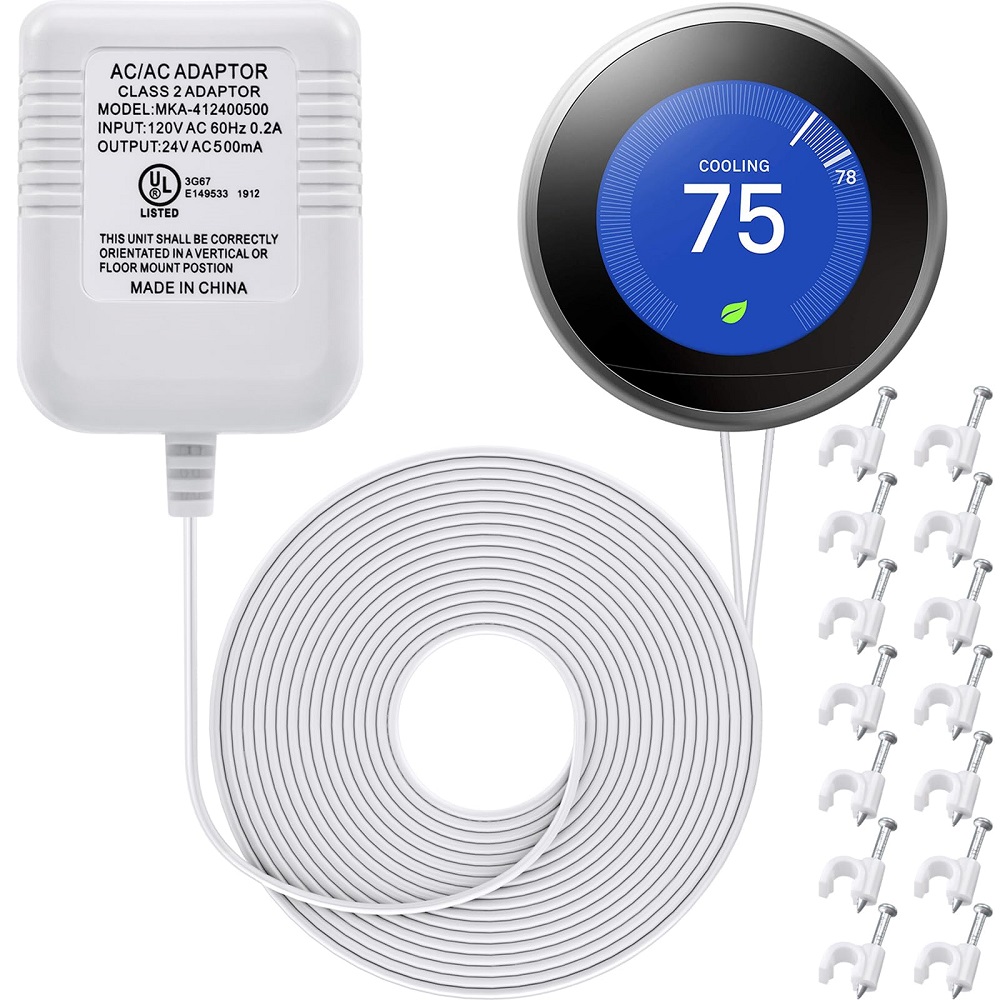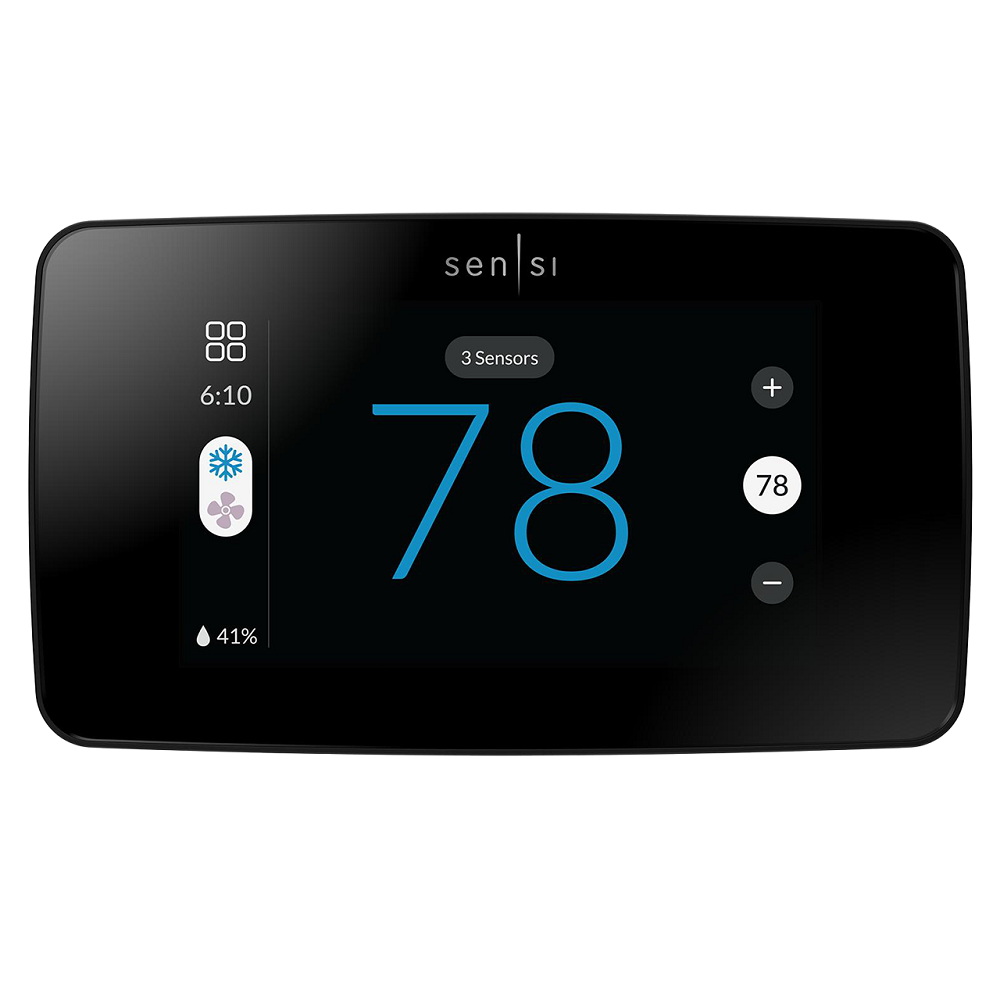Introduction to Smart Thermostats
Smart thermostats offer a unique blend of convenience and energy efficiency. These devices allow homeowners to control heating and cooling settings remotely using smartphones or voice commands. Unlike traditional thermostats, smart thermostat without C-wire are designed for easy installation and versatility.
Advanced technology in smart thermostat without C-wire can learn your habits and adjust the temperature automatically. This feature ensures optimal comfort and can also lead to substantial savings on utility bills. Moreover, users can monitor and adjust their settings from anywhere, providing unmatched flexibility.
The increasing popularity of smart thermostats has made them a fundamental component in modern smart homes. As technology progresses, these devices continue to evolve, becoming more user-friendly and accessible to people without technical backgrounds.

Understanding the C-Wire
What is a C-Wire?
The C-Wire, or ‘common wire,’ provides a continuous flow of power to your smart thermostat. Without it, keeping a constant connection with the HVAC system is a challenge. Think of it as a bridge that carries energy to keep your device ‘awake’ and responsive at all times. In traditional setups, this wire is crucial for the seamless operation of smart thermostats.
Why is it Important for Thermostats?
A C-Wire is important because it supplies steady power to the smart thermostat. This ensures that the device maintains its settings and remains operational without interruption. A smart thermostat without a c wire might face power outages, leading to discomfort and possible reconfiguration hassles. In essence, the C-Wire is the backbone for continuous operation and reliability of your smart climate control system.
Options for Smart Thermostat without C-Wire
Choosing the right smart thermostat without a C-Wire can be simple. Here are two popular solutions:
Battery-Operated Models
Battery-operated smart thermostats are a great alternative where C-Wire is absent. These models use batteries to function, making them easy to install and maintain. It’s important to check battery levels periodically to ensure continuous operation.
Power Adapter Kits
Another option is to use a power adapter kit. These kits can mimic the function of a C-Wire by providing constant power to the thermostat. Installation is straightforward, usually involving the plugging of an adapter into a nearby wall socket. This method helps avoid potential HVAC system modifications that could be costly and complex.
Both options allow the enjoyment of smart thermostat benefits without the need for a C-Wire. These solutions ensure your smart thermostat performs optimally, even without traditional wiring setups.

Preparing for Installation
Before installing your smart thermostat without a C-Wire, proper preparation is crucial. This section outlines essential tools and materials you’ll need, and safety precautions to observe.
Tools and Materials Needed
To install a smart thermostat without a C-Wire, you will need the following:
- Screwdriver set: For opening the thermostat panel and securing connections.
- Wire strippers: To prepare wires for connection if necessary.
- Batteries or power adapter kit: Depending on your chosen model.
- User manual: For specific instructions related to your smart thermostat model.
- Smartphone or tablet: To configure and test the thermostat post-installation.
Gathering these tools and materials beforehand will streamline the installation process.
Safety Precautions
Safety should always be a priority. Here are key safety tips:
- Turn off the power: Ensure you switch off the main power to your HVAC system to avoid electrical hazards.
- Handle wires carefully: Wires should be handled gently to prevent damage or shocks.
- Follow manufacturer guidelines: Adhere to the installation instructions provided by the smart thermostat manufacturer.
- Test before use: Once installed, test the smart thermostat thoroughly to ensure it operates correctly without disrupting the HVAC system.
Following these precautions helps prevent accidents and ensures a smooth installation of your smart thermostat without a C-Wire.
Step-by-Step Installation Process
Installing a smart thermostat without a C-Wire involves several steps. Follow this guide to ensure a correct and safe installation.
Removing the Old Thermostat
Begin by turning off the main power to your HVAC system. This prevents any electrical hazards. Next, remove the cover of the old thermostat. Most covers snap off easily. Unscrew the mounting screws and gently pull the device away from the wall. Take a photo of the wire connections for reference. Disconnect the wires, ensuring you label each one to avoid confusion later.
Installing the Smart Thermostat
Start by mounting the new thermostat’s base plate to the wall. Ensure it’s level for optimal operation. Connect the wires to the corresponding terminals on the new thermostat, using your photo as a guide. If using a power adapter kit, plug it into a socket and connect it to the thermostat now. Secure the thermostat on the base plate and ensure it clicks into place.
Configuring the Thermostat Settings
Finally, switch the main power back on. Follow the manufacturer’s setup instructions to connect the smart thermostat to your Wi-Fi network. Use your smartphone or tablet to configure the settings. Set your desired temperatures and schedules. Test the thermostat to ensure it operates correctly with your HVAC system.
By carefully following these steps, your new smart thermostat should be up and running smoothly. Enjoy the convenience and energy savings it offers.

Troubleshooting Common Issues
After installing your smart thermostat without a C-Wire, you may encounter some issues. Don’t worry, as most problems have simple solutions.
Power Problems
Power issues are common with battery-operated models. To fix these:
- Check the battery levels and replace if necessary.
- Ensure the power adapter kit is plugged in properly.
- Look for loose wire connections and secure them.
- Reset the thermostat according to the user manual.
These steps typically resolve power issues and get your thermostat back to working order.
Connectivity Issues
Connectivity problems can prevent your smart thermostat from performing optimally. To resolve these:
- Verify that your Wi-Fi network is working correctly.
- Move any devices that may cause wireless interference away from the thermostat.
- Reconnect the thermostat to your Wi-Fi network, following the manufacturer’s guide.
If the issue persists, consult the manufacturer’s support for advanced troubleshooting. By addressing these common issues, your smart thermostat without a C-Wire should function seamlessly, ensuring your home’s comfort and efficiency.
Maintenance and Care for Smart Thermostats
Proper maintenance and care are key to ensuring the longevity and efficiency of your smart thermostat without a C-Wire. Here are some simple yet effective ways to maintain your device:
Routine Check-ups
Conduct regular inspections of your smart thermostat. Check for dust build-up and gently clean the device with a soft cloth. Ensure that all wire connections are tight and secure. Monitor battery levels in battery-operated models, and replace batteries as needed to prevent power disruptions.
If your smart thermostat uses a power adapter kit, verify that the adapter is functioning correctly and that the socket it is plugged into is not overloaded. Don’t forget to look for any physical damage or wear that might affect performance.
Software Updates
Just like any other tech device, your smart thermostat can receive software updates. These updates often include bug fixes, security enhancements, and new features. Check for updates regularly through the thermostat’s app on your smartphone or tablet. Keep the software up-to-date to make the most of your thermostat’s capabilities and to maintain optimal operation.
By following these maintenance tips, your smart thermostat should continue to provide convenient climate control and energy savings. Remember, a little attention goes a long way in keeping your smart home devices in top condition.